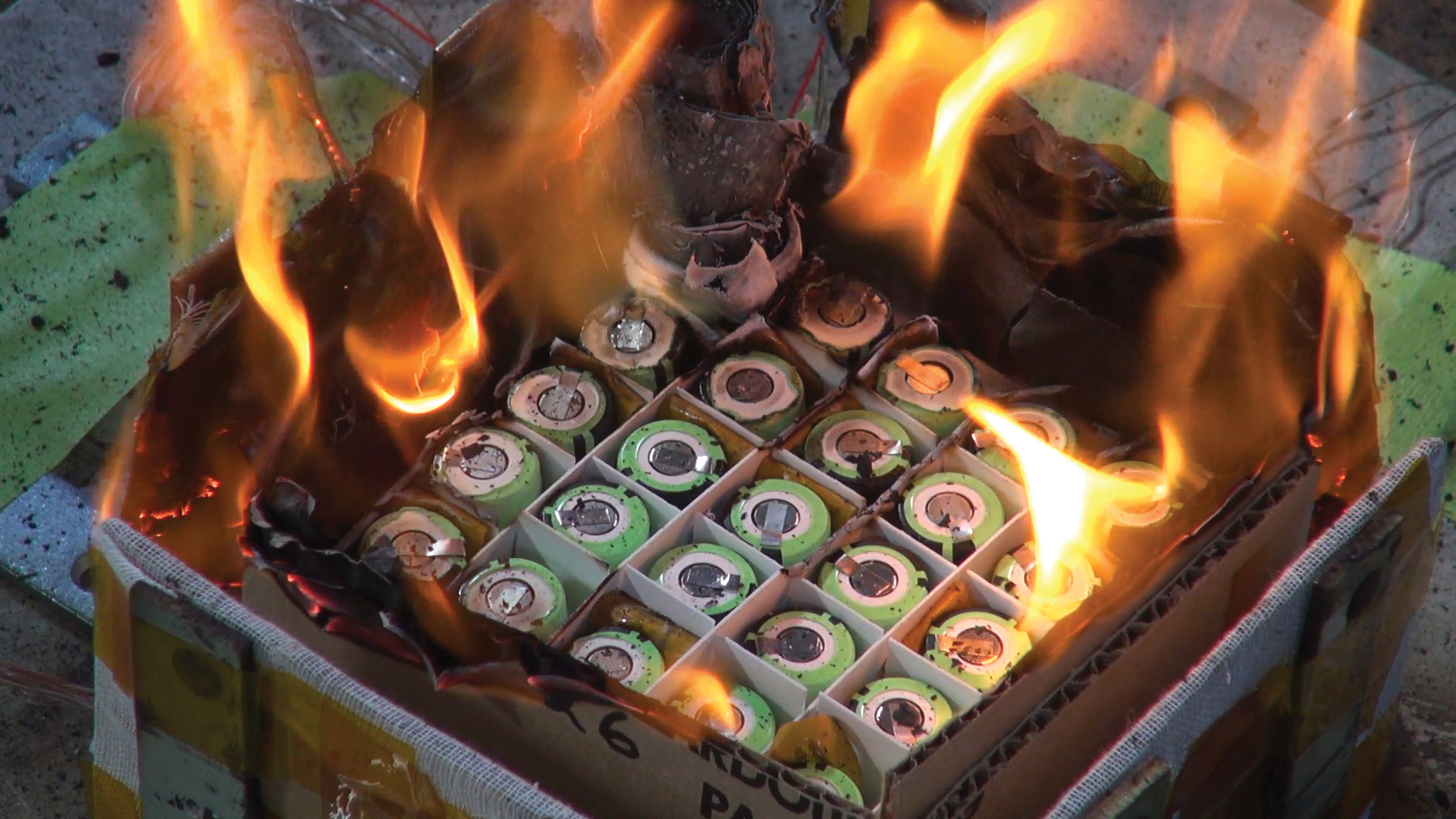
Increased Safety for Large-scale Lithium-Ion Battery Systems
Program Overview
Electrochemical Safety Research Institute (ESRI) of UL Research Institutes (ULRI) is interested in research on advanced gas sensors to detect early stages of cell venting in lithium-ion multi-cell modules.
Award Information
Type of Award: Competitive grant
Number of Awards Given: Up to 2
Funding Amount: Up to $200,000 a year
Duration of Award: 3 years
Key Dates
Feb. 16, 2024 (by 11:59 p.m. EST): Letter of intent submission due (required)
May 10, 2024 (by 11:59 p.m. EST): Full proposal deadline
Key Resources
Full Notice of Funding Opportunity
Program Terms and Conditions (updated April 1st, 2024)
Application Submission Instructions
Stay in the Know
The application submission deadline for this cycle has passed. Subscribe to our mailing list to receive information about future funding cycles and the latest updates about the Discoveries in Safety Grants Program.
Background
Electrochemical Safety Research Institute (ESRI) of UL Research Institutes is dedicated to advancing safe energy storage through discovery-driven research. With renewable energy’s growing importance, our scientists explore and address safety issues in batteries. Our work benefits the entire energy storage chain, promoting safety awareness and best practices. We understand that partnering with experts is vital for creating a safer and more sustainable world, where our collective efforts drive positive change. We engage in scientific research independently as well as in partnership with esteemed research institutions and leading experts. Our commitment to transparency drives us to disseminate this knowledge to scholars and industry leaders, setting benchmarks and offering guidance for the responsible advancement of products and emerging technologies.
Grant Purpose
ESRI is interested in funding proposals that focus on monitoring designed to permit detection of possible thermal runaway of Ii-ion batteries. This may focus on gas sensing capability of small volumes of early release or large volumes that are released from Ii-ion batteries at various stages of thermal runaway. The preference is for dynamic gas sensing capability as the nature and volume of the gases can change with time as the battery continues to burn. An understanding of the scale of the event should be exhibited. This type of information will be very informative for prevention of full thermal runaway as well as for first responders and fire fighters to tackle large scale Ii-ion battery fires.
Applications for lithium-ion (Ii-ion) cells has increased exponentially in the past three decades with its use in battery systems ranging in size from 10s of kWh (typically used in electric vehicles) to MWh and GWh (typically used in stationary grid energy storage systems) becoming more common. However, the complexities of such a large battery system have challenged the safety of these installations. Lack of stringency at every stage of manufacturing as well as the inadvertent exposure to off-nominal electrical, mechanical, or thermal faults has caused these systems to experience catastrophic events.
Research has also indicated that lithium-ion cells are typically designed to vent the initial accumulation of gases and there may be a time gap between this initial venting and the final thermal runaway of the cells. It is possible to mitigate the thermal runaway if a good sensing of the gases emitted during venting is provided as mitigation strategies such as sudden cooling of the entire system can be initiated to prevent the catastrophic event from occurring. Dynamic gas sensing techniques can provide advance warning remotely to first responders and fire fighters on what can be expected with respect to trapped toxic and combustible gases when they have to deal with the large electric vehicle or energy storage systems fires.
Eligibility Information
Who Should Submit Proposals:
All proposals should be submitted by an accredited college, university, government, or non-government organization (including not-for-profit and for-profit institutions) with recognized legal status in their respective country.
At ULRI, we embrace our responsibility to impact the planet positively by advancing our mission through collaborative research and outreach. We believe that inclusivity fuels brilliance in innovation, creative problem-solving, and, ultimately, excellence in safety science discovery.
ULRI encourages proposals from, or collaborations with, diverse research teams, including minority-serving institutions (MSIs), including Historically Black Colleges and Universities (HBCUs), Hispanic-Serving Institutions (HSIs), Tribal Colleges and Universities (TCUs), and other institutions with a predominantly underrepresented student population.
Who May Serve as PI:
The Principal Investigator (PI) must be an individual of the organization holding a full-time administrative or faculty role. The PI should continue in this role for the duration of the three years of the award. Multiple PIs can be added during this time.
The PI must NOT be:
- From a country under U.S. export control or sanctions;
- A previous employee of UL Solutions, ULRI, or UL Standards & Engagement (ULSE) within 12 months prior to submitting a Letter of Intent for this program.